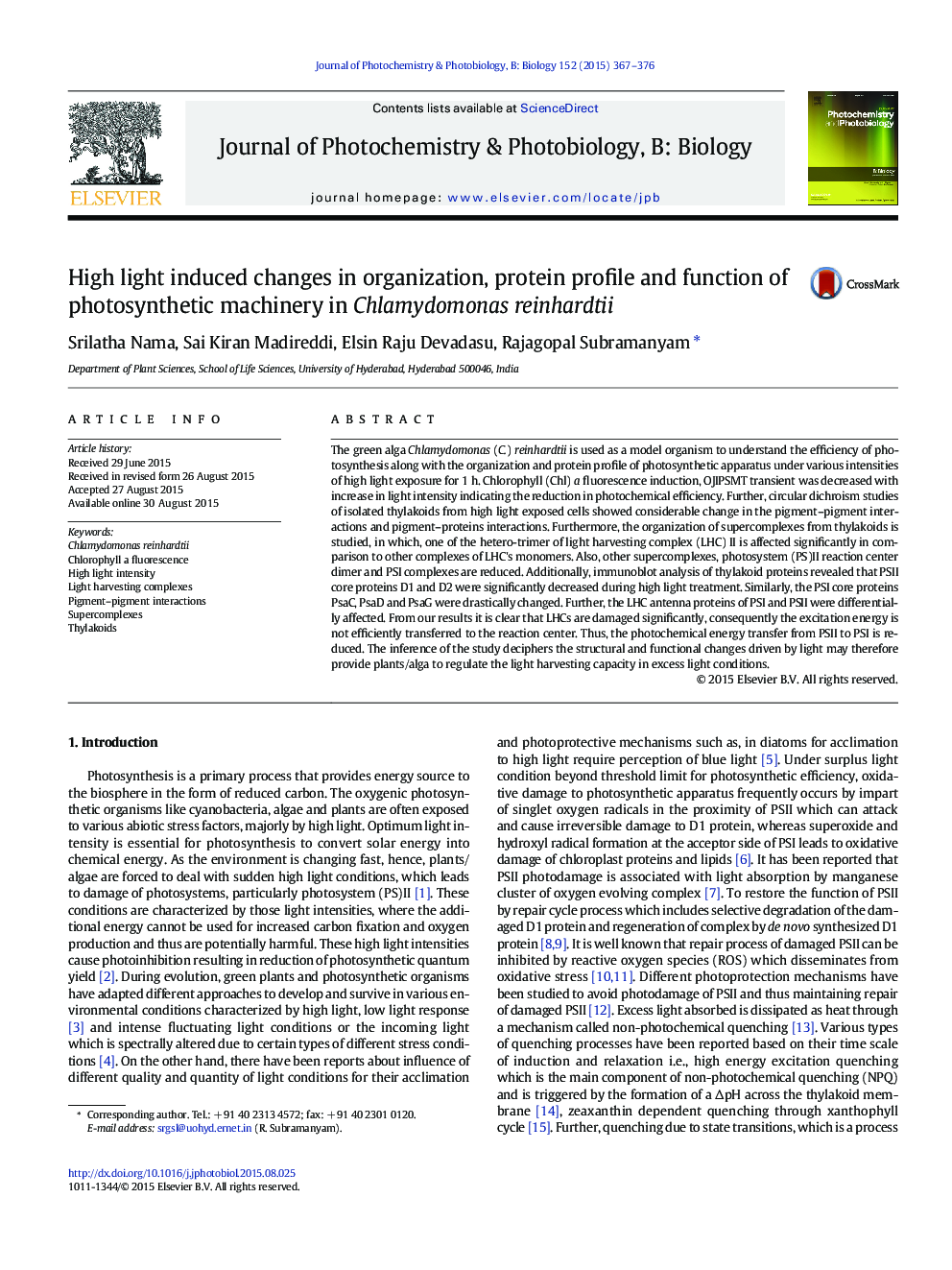| Article ID | Journal | Published Year | Pages | File Type |
|---|---|---|---|---|
| 29664 | Journal of Photochemistry and Photobiology B: Biology | 2015 | 10 Pages |
•Gradual decrease in photochemical yields with increased light intensity.•Significant differences in pigment–protein interactions were observed.•PSII core proteins (D1&2) are more reduced than core antenna proteins (CP43&47).•Two of LHCII hetero-trimers were affected by excess light which is also observed in BN-PAGE.•High light induced decrease in protein content of PsaC and PsaD which is crucial for function of PSI.
The green alga Chlamydomonas (C.) reinhardtii is used as a model organism to understand the efficiency of photosynthesis along with the organization and protein profile of photosynthetic apparatus under various intensities of high light exposure for 1 h. Chlorophyll (Chl) a fluorescence induction, OJIPSMT transient was decreased with increase in light intensity indicating the reduction in photochemical efficiency. Further, circular dichroism studies of isolated thylakoids from high light exposed cells showed considerable change in the pigment–pigment interactions and pigment–proteins interactions. Furthermore, the organization of supercomplexes from thylakoids is studied, in which, one of the hetero-trimer of light harvesting complex (LHC) II is affected significantly in comparison to other complexes of LHC's monomers. Also, other supercomplexes, photosystem (PS)II reaction center dimer and PSI complexes are reduced. Additionally, immunoblot analysis of thylakoid proteins revealed that PSII core proteins D1 and D2 were significantly decreased during high light treatment. Similarly, the PSI core proteins PsaC, PsaD and PsaG were drastically changed. Further, the LHC antenna proteins of PSI and PSII were differentially affected. From our results it is clear that LHCs are damaged significantly, consequently the excitation energy is not efficiently transferred to the reaction center. Thus, the photochemical energy transfer from PSII to PSI is reduced. The inference of the study deciphers the structural and functional changes driven by light may therefore provide plants/alga to regulate the light harvesting capacity in excess light conditions.
Graphical abstractHigh light induced changes in Chlamydomonas reinhardtii. A Schematic model to represent the high light induced changes in PSII-LHCII Supercomplex (side view) and PSI-LHCI Supercomplex (top view) in the thylakoid membranes. The protein subunits of photosystems (PSII and PSI) damaged/content levels decreased is indicated by dark green.Figure optionsDownload full-size imageDownload as PowerPoint slide
